Life
Sign up for our newsletter
We summarize the week's scientific breakthroughs every Thursday.
-
 Neuroscience
NeuroscienceA frog study may point to where parenting begins in the brain
Two brain regions, including one active in mammal parents, lit up with activity in both male and female poison frogs when caring for their tadpoles.
-
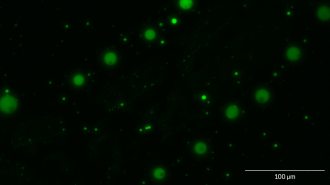 Chemistry
ChemistryDroplets of these simple molecules may have helped kick-start life on Earth
Simple molecules called alpha hydroxy acids form cell-sized structures in conditions mimicking early Earth chemistry.
By Carmen Drahl -
 Neuroscience
NeuroscienceBoosting a gut bacterium helps mice fight an ALS-like disease
Gut bacteria may alter ALS symptoms for good or ill.
-
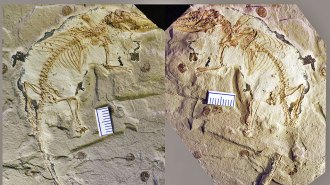 Paleontology
PaleontologyA flexible bone that helps mammals chew dates back to the Jurassic Period
A flexible bone that helps with chewing may have helped give rise to the Age of Mammals, a new fossil shows.
-
 Health & Medicine
Health & MedicineManipulating nerve cells makes mice ‘see’ something that’s not there
Using optogenetics to stimulate about 20 nerve cells causes mice to perceive nonexistent vertical or horizontal lines.
-
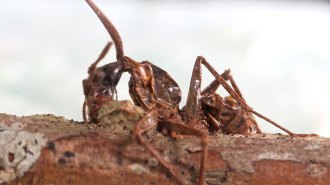 Animals
AnimalsA deadly fungus gives ‘zombie’ ants a case of lockjaw
Clues left on infected ant jaws may reveal how the ‘zombie-ant-fungus’ contracts ant muscles to make their death grip.
-
 Ecosystems
EcosystemsPlanting trees could buy more time to fight climate change than thought
Earth has nearly a billion hectares suitable for new forests to start trapping carbon, a study finds.
By Susan Milius -
 Genetics
GeneticsThis gene may help worms live longer, but not healthier
Antiaging therapies may have trade-offs, research on worms suggests.
-
 Life
LifeSpraying bats with ‘good’ bacteria may combat deadly white nose syndrome
Nearly half of bats infected with white nose syndrome survived through winter after being spritzed with antifungal bacteria, a small study finds.
-
 Health & Medicine
Health & MedicineTiny glasses help reveal how praying mantises can see in 3-D
Newfound nerve cells in praying mantises help detect different views that each of the insects’ eyes sees, a mismatch that creates depth perception.
-
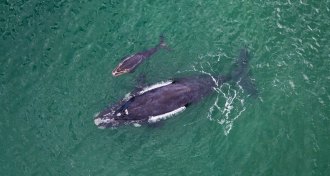 Animals
AnimalsSouthern right whale moms and calves may whisper to evade orcas
Mother-calf whale pairs call to each other quietly to stay in touch while avoiding attracting the attention of predators, a study suggests.
-
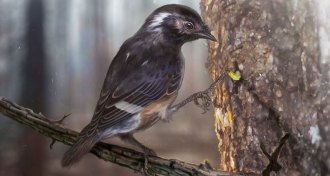 Paleontology
PaleontologyAn ancient bird found encased in amber had a bizarrely long toe
A 99-million-year-old fossil holds a bird with an oddly long toe, which might have helped the critter hook hard-to-reach dinners.